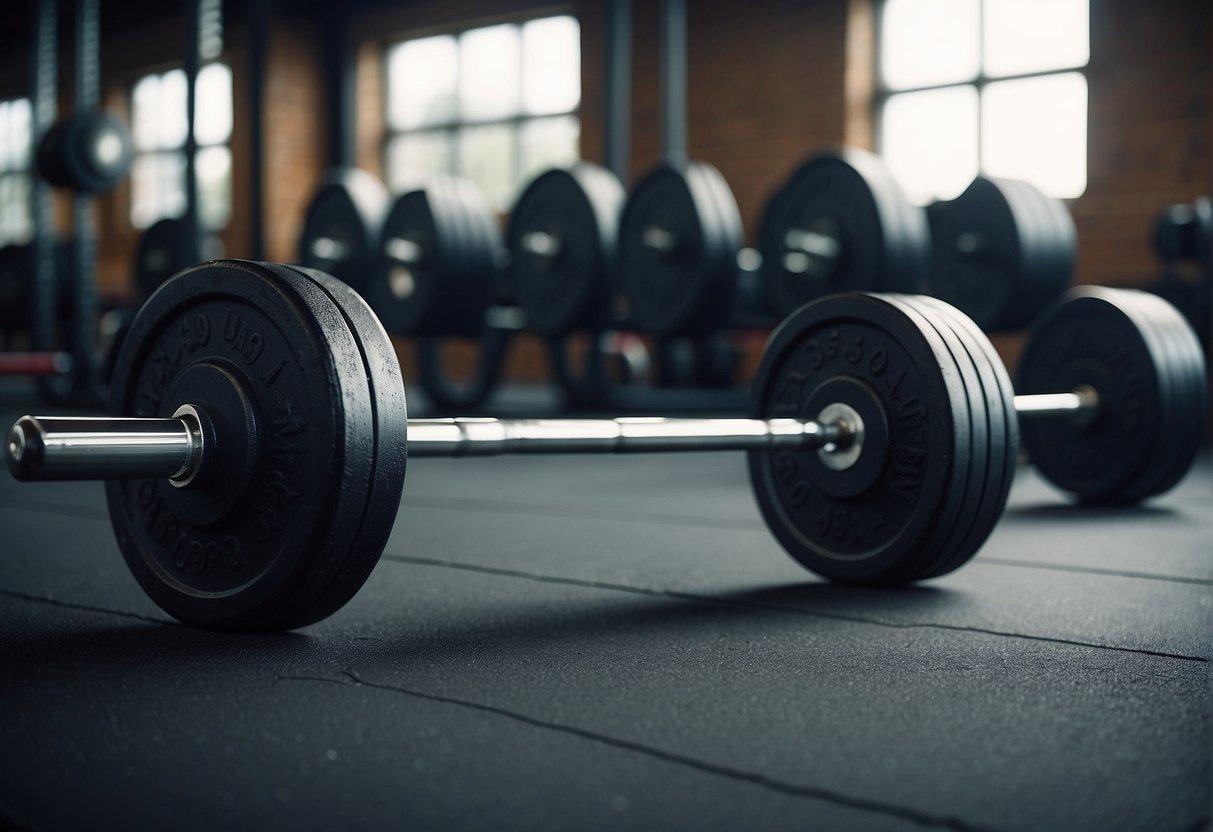📦 FREE Shipping
How Many Calories Does Deadlifting Burn 2024: Surprising Facts

Elevate your strength training knowledge with “How Many Calories Does Deadlifting Burn: Surprising Facts,” where we reveal the intense calorie-burning power of this fundamental lift.
How Many Calories Does Deadlifting Burn?
Deadlifting involves lifting a weight off the ground to the level of the hips and then putting it down again. It’s a compound exercise that works multiple muscle groups, including the glutes, hamstrings, lower back, core, and forearms.
- Muscles Targeted: Glutes, hamstrings, lower back, and more.
- Exercise Type: Compound movement.
Essentially, deadlifting is a full-body workout that demands considerable energy, contributing to higher calorie burn.
Calories Burned During Deadlifts
The amount of calories you burn during deadlifts can be substantial. For an individual weighing around 82 kilograms, doing deadlifts can burn around 500 calories per hour.
- Approximate Calories Burned for an 82 kg Individual: 500 calories/hour.
This number will vary based on workout duration and your intensity to each session.
Factors Influencing Caloric Expenditure
Several factors will determine the total calories burned during your deadlifting session:
- Your Body Weight: Heavier individuals burn more calories.
- Intensity: Lifting heavier weights or increasing workout pace ups calorie burn.
- Duration: Longer workouts increase total caloric expenditure.
- Metabolic Rate: A higher metabolic rate burns more calories during rest and exercise.
- EPOC (Excess Post-Exercise Oxygen Consumption): After intense workouts like deadlifting, your body burns more calories as it returns to its resting state.
- MET Value (Metabolic Equivalent of Task): Deadlifting has a MET value that reflects its ability to burn calories compared to resting.
Technique and Safety for Maximum Efficiency
Maximizing calorie burn while deadlifting hinges on mastering your form and ensuring your safety. Nailing the correct technique fuels your calorie-torching sessions and shields you from common injuries, making your workout productive and enjoyable.
Proper Deadlift Form
To execute a deadlift with precision:
- Position your feet: Plant them hip-width apart.
- Grip the bar: Place hands just outside your legs, using an overhand or mixed grip.
- Align your spine: Keep your back straight, chest up, and shoulders slightly back.
Inhale, brace your core muscles, and:
- Lift: Drive through your heels, extending hips and knees.
- Control: The bar path should be close to your body.
- Finish: Stand tall with the barbell against your thighs, shoulders back, and core tight.
Common Deadlifting Injuries and Prevention
Deadlifting taps into various muscle groups, making form glitches a frequent source of injury. Here’s how to stay safe:
- Prepare your body: Warm-up your hamstrings, glutes, and back before lifting.
- Mind your lower back: Avoid rounding to prevent lower back pain. If you feel stress in your back, review your form.
Remember, the range of motion (ROM) should be comfortable and controlled. Overextending or jerking can strain your back. Be vigilant with your form to bolster your safety and send your calorie burn soaring.
Enhancing Deadlift Performance and Benefits

Incorporating Variations for Muscle Growth
Experimenting with deadlift variations can significantly impact muscle growth and prevent training plateaus. Here are a few variations you should consider:
- Sumo Deadlifts: These work your glutes and inner thighs more intensely due to the wider stance.
- Romanian Deadlifts: You target your hamstrings and lower back by focusing on the lowering phase, reinforcing muscle development.
Supplementary Exercises for a Fuller Workout
Pairing with supplementary exercises is key to enhancing the gains from your deadlifts.
Here are a couple that synergize well:
- Squats: As another powerful compound exercise, squats complement deadlifts by targeting complementary muscle groups for balanced strength training.
- Pull-ups/Rows: Incorporate these to improve upper body strength, ensure a strong core for stable deadlift form, and emphasize the full-body workout nature of deadlifts.
FAQ:
Is deadlifting good for weight loss?
Deadlifting is beneficial for weight loss as it’s a compound exercise that burns calories and builds muscle.
Is 500 a lot to deadlift?
Deadlifting 500 pounds is considered significant, indicating a high level of strength, especially if it’s well above your body weight.
What burns more calories deadlifts or squats?
Both deadlifts and squats burn a similar number of calories, but this can vary depending on the weight used and intensity of the workout.
Does deadlift burn back fat?
Deadlifts don’t specifically target back fat; they build muscle and can contribute to overall fat loss as part of a calorie-controlled diet and exercise routine.
If this article about “How Many Calories Does Deadlifting Burn” helped you, don’t forget to leave us a comment below about what you think of the article.

